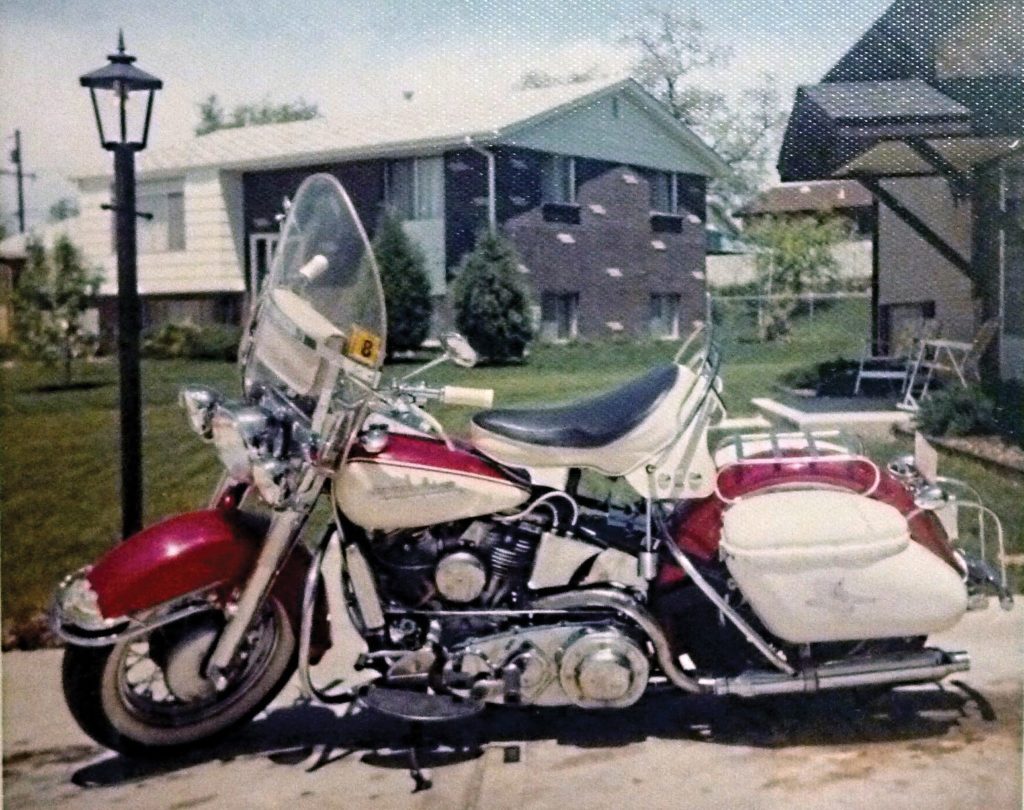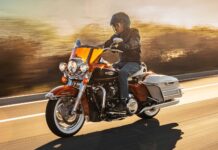When I was but a callous youth, motorcycles had a feature that’s missing today. Namely, that every once in a while you’d see a motorcycle so much larger than the others it stuck out like a whale among minnows.
My friends those many years ago all rode Japanese motorcycles, and the biggest of them was my buddy Frank’s Honda 305. Many times my dad would bust out his Panhead (and my mother) and come along. Can you picture it?
It was a time when a big bike was a 500. It was a size and type to aspire to, particularly if the 500 was a Triumph. A few years later (’67) my friend Charlie bought a 650TT Special Bonneville – positively huge in comparison. That stripped-down Triumph was svelte (350 pounds) compared to Pop’s 580-pound Pan, but it was a big bike all the same. Though the terms didn’t exist at the time, think of it as a sportbike-vs.-touring-bike sorta thing.
My ride back then was the hottest 250 made, a Suzuki X6 Hustler, which made all of 29 hp and weighed a mere 301 pounds gassed up and ready. That pencils out to a power-to-weight ratio of almost 10:1. Do the same on the others and you’ll see that the Triumph was cutting-edge, as its p/w was about the same, even with a rider aboard. Nowadays this all seems pretty paltry, but it serves as a decent template for commentary on the modern state of the motorcycle art.

First, that whale/minnow metaphor doesn’t really exist anymore. Harley’s Big Twins have not gotten smaller, yet H-D has been outflanked on all sides by competition as large (or larger). The Motor Company no longer builds engines twice the size (or more) of anyone else.
Second, while most motorcycles have gotten bigger, damn few have gotten lighter.
Third, bigger isn’t always better.
Fourth, it isn’t that simple. There’s a rider involved, and one size does not fit all.
Let’s face it, we have been conditioned to pay extra for – well – air! And usually accompanied by extra tonnage. For example, compare the old 74-inch Panhead to a new 107-inch Road King; the engine is 33 inches bigger and the machine is 210 pounds heavier. For those keeping score that’s an increase in both areas of about a third. How many of us have increased our strength (never mind our personal power/weight ratio) by that much over the years? Point is, as per our vintage rider/writer Reg Kittrelle, unless you have really worked on it, chances are many modern motorcycles have simply outgrown us.
This isn’t a totally bad thing, but while the displacement (and weight) wars rage on, smaller, lighter motorcycles have more to offer these days than they ever did, and there are more of them. The real benefit, of course, is balance: enough power, handling and braking to make an average rider look good and a great one seem like a superhero. When the late Lotus race car designer Colin Chapman said “adding lightness” was part of his car-building philosophy, he was on to something.
Even behemoths like the latest Triumph Rocket III have lost weight (88 pounds) in their latest iteration. Harley’s M8 Softail line is also in line with the concept, some models weighing much less than the Dynas used to. Better bikes and easier to ride thanks to that.
Bottom line? We get older and weaker while motorcycles get bigger and stronger. Sound like a disconnect? Well, it can be, and too often it is, but it needn’t be.
Let’s be honest. It really takes no skill to straddle a Barcalounger going 60 mph in a straight line. Just being able to start rolling without stalling or falling isn’t enough, either. If you can’t make a U-turn without duck walking, or stop to the limit of your brakes, or lean, turn and swerve as necessary, you need one of two things, and maybe both: A new motorcycle that matches your skills, or new skills that match your motorcycle.
Don’t let marketing turn into brainwashing. To enjoy this sport, a good match is key. There are plenty of excellent motorcycles to choose from and there’s no shame in making the choice that’s best for you and your needs and skills. The reason motorcycles come in so many shapes, sizes and capabilities is that the humans who ride them come in so many shapes, sizes and capabilities. It’s not about what you can afford, either. It’s about what you can use…wisely.
If you have any tech tips or questions or unsolvable motorcycle mysteries, email motorhead@thunderpress.net.




















My guess is that from the time that Panhead was built until today, the average forty year old American man has grown five inches and put on a hundred pounds. Don’t tell me people haven’t gotten bigger. The average high school girl is taller than the average adult man was seventy years ago!